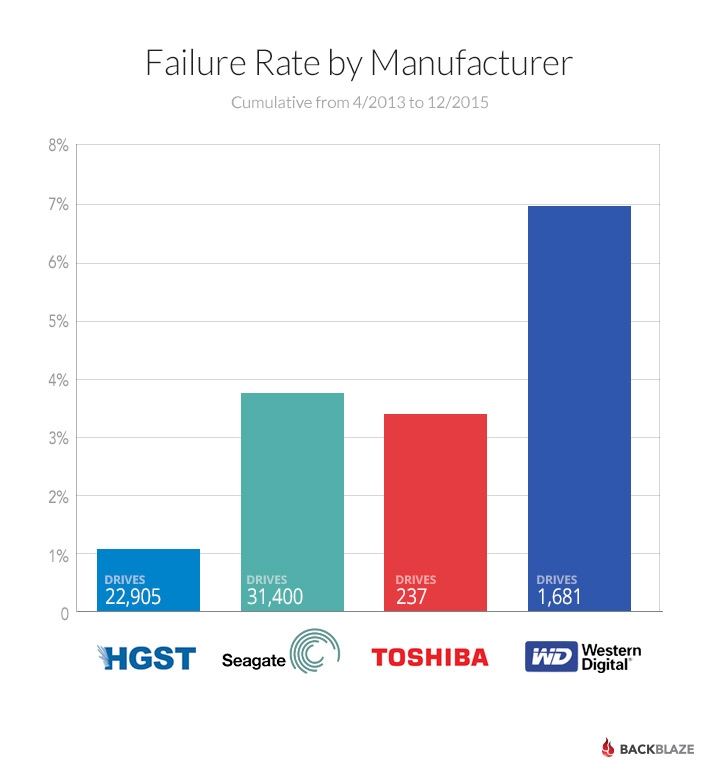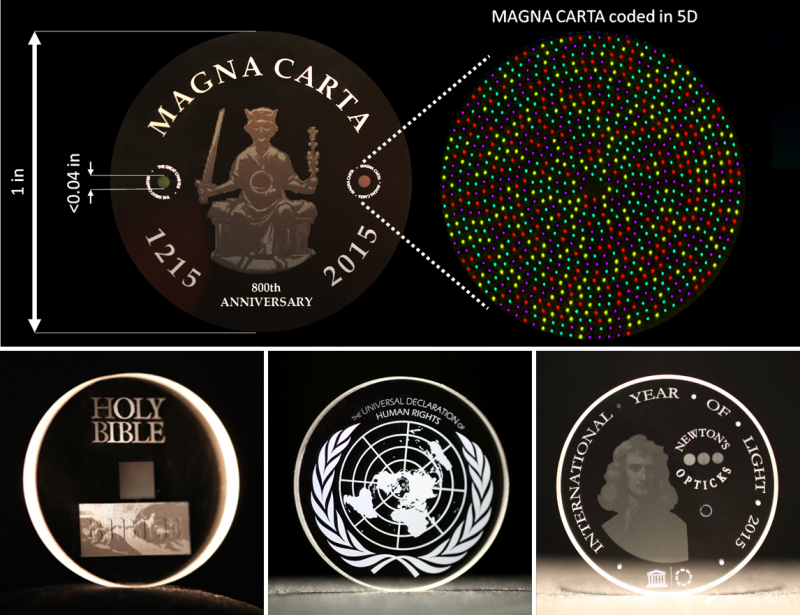
Hard drive reliability review for 2015 By the end of 2015, the Backblaze datacenter had 56,224 spinning hard drives containing customer data. These hard drives reside in 1,249 Backblaze Storage Pods. By comparison 2015 began with 39,690 drives running in 882 Storage Pods. We added 65 Petabytes of storage in 2015 give or take a Petabyte or two. Not only was 2015 a year of growth, it was also a year of drive upgrades and replacements. Let’s start with the current state of the hard drives in our datacenter as of the end of 2015 and then dig into the rest later on. Backblaze
Is D-Wave's quantum processor really 10⁸ times faster than a normal computer? We have been following D-Wave's claims about its quantum hardware at Ars for a number of years. Over that time, my impression has oscillated between skepticism, strong skepticism, and mild enthusiasm. Back in November, D-Wave issued a press release that basically asked tech journalists to spray paint a finish line just behind their feet and break out a victory flag. It seemed a bit much. But now that D-Wave has declared victory, perhaps it's time to re-examine the skepticism. Ars Technica
How Google's web crawler bypasses paywalls Wall Street Journal fixed their "paste a headline into Google News" paywall trick. However, Google can still index the content. Digital publications allow discriminatory access for search engines by inspecting HTTP request headers. The two relevant headers are Referer and User-Agent. Referer identifies the address of the web page that linked to the resource. Previously, when you clicked a link through Google search, the Referer would say https://www.google.com/. This is no longer enough. Elaineou.com
The woman who aims to take Tor mainstream "Tor is essential," Shari Steele says over the phone. "Tor is so critically important. We can't afford to not have Tor." That's the kind of thing someone might say when all hell is about to break loose, but Steele sounds downright ecstatic. Over her career, she has taken on United States Department of Justice (DOJ), the National Security Agency (NSA), and the Federal Bureau of Investigation (FBI). She built the Electronic Frontier Foundation (EFF) into an international powerhouse for protecting online rights. The Daily Dot
Original 1977 Star Wars 35mm print has been restored and released online A restored HD version of the original Star Wars Episode IV: A New Hope 35mm print has appeared online. While this isn't the first time that attempts have been made to restore Star Wars to its original theatrical version -- that's the one without the much-maligned CGI effects and edits of later "special" editions -- it is the first to have been based entirely on a single 35mm print of the film, rather than cut together from various sources. Ars Technica
555 timer teardown: inside the world's most popular IC If you've played around with electronic circuits, you probably know[1] the 555 timer integrated circuit, said to be the world's best-selling integrated circuit with billions sold. Designed by analog IC wizard Hans Camenzind in 1970, the 555 has been called one of the greatest chips of all time with whole books devoted to 555 timer circuits. Righto.com
Bulky cameras, meet the lens-less FlatCam Camera technology has improved dramatically in the past decades, but one thing about even the newest cameras has stayed constant: They all have lenses. Now, that's changing. Engineers in Texas are building a camera that can make a sharp image with no lens at all. NPR
The Gigabyte Z170X-UD5 TH motherboard review: An entry to Thunderbolt 3 At the initial phase of Intel's Skylake processor launch, a myriad of Z170 equipped motherboards were released to enable the platform. One of the prominent features of Z170 was the ability to support Thunderbolt 3 when the motherboard also used Intel's Alpine Ridge Controller and was certified. GIGABYTE had the initial exclusive on the controller, but has had to wait for TB3 enabled devices to hit the market. AnandTech
Enabling human-robot rescue teams Autonomous robots performing a joint task send each other continual updates: "I've passed through a door and am turning 90 degrees right." "After advancing 2 feet I've encountered a wall. I'm turning 90 degrees right." "After advancing 4 feet I've encountered a wall." And so on. Computers, of course, have no trouble filing this information away until they need it. But such a barrage of data would drive a human being crazy. MIT
The contrarian response to Apple's need for encryption On December 2, 2015, [Syed Rizwan Farook] and [Tashfeen Malik] opened fire at a San Bernardino County Department of Public Health training event, killing 14 and injuring 22. This was the third deadliest mass shooting in the United States in recent memory, and began a large investigation by local, state, and federal agencies. One piece of evidence recovered by the FBI was an iPhone 5C belonging to one of the shooters. Hackaday
Eternal 5D data storage could record the history of humankind Scientists at the University of Southampton have made a major step forward in the development of digital data storage that is capable of surviving for billions of years. Using nanostructured glass, scientists from the University’s Optoelectronics Research Centre (ORC) have developed the recording and retrieval processes of five dimensional (5D) digital data by femtosecond laser writing. University of Southampton

Robotic vacuums: a PC enthusiast's primer Owning a robot vacuum can be its own hobby in a number of ways. If you think that notion's a little far-fetched, remember that the site you're reading right now is dedicated to what many people consider to be just computers. A similar community has coalesced around the idea that Roombas, Neatos, and their ilk are more than just vacuums. The Tech Report
Analysis: 6 ways Street Fighter V tries to reinvent the franchise Capcom is at a crossroads with Street Fighter V. It could have chosen to build a game for the casual players that paid their bills on SF4; certainly Mortal Kombat X's breakaway success in 2015 implies that the market for legacy fighting game franchises with lots of single-player story-driven content is alive and kicking. Gamasutra
Inside Samsung 837: Samsung's first North American flagship Samsung 837, the Korean giant's first flagship retail space opens on Monday in New York City. Located at 837 Washington Street in the Meatpacking District, the 55,000 square-foot space isn't your typical retail store. In fact, it's not a store at all. Mashable
Where are they now 2016: Part two I thought it would be fun to go back and take another look at those developers I covered in the early days of Electron Dance. In six years, what has happened to them? In part two: Puppygames, Douglas Wilson and Michael Brough. Electron Dance (part one)